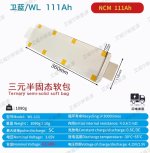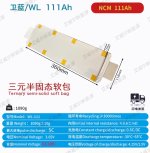JRP3
1 kW
What high performance EV has limited acceleration because of pack output instead of traction? Tesla doesn't seem to have any problem getting enough power out of their NMC packs 580kW from their 100kWh pack is more than 5C.I wouldnt say there are high energy density cells that have 5C, more like max 2-3C, looking at the data on nkon.nl for 21700 cell format






